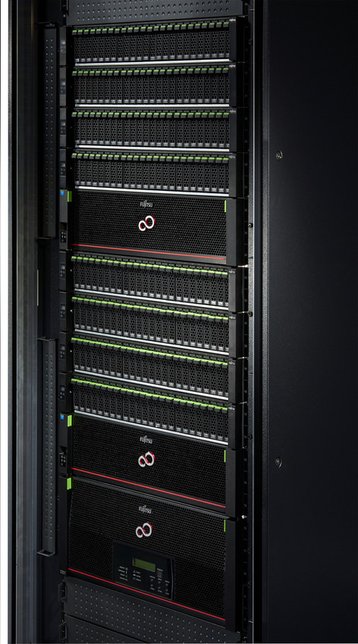Japanese IT equipment and services giant Fujitsu has revealed the third generation of Eternus DX hybrid storage arrays.
The Eternus DX8700 S3 was designed for organizations that are currently managing around a Petabyte of data, with the ability to scale to 4PB. The DX8900 S3 is the new flagship, able to scale to almost 14 Petabytes and four million IOPS.
The newcomers build upon the familiar disaster recovery and automation features, while considerably increasing the number of supported drives and storage controllers and adding Eternus Storage Cluster technology, originally developed for smaller arrays.
Expect the unexpected
Fujitsu updated its high-end arrays to prepare customers for the massive increase in the number of available data sources, and the associated demand for storage. Customers can start deployment of the new systems with just one rack and increase capacity by adding one drive enclosure at a time.
“A lot of customers who are operating a data center in the Petabyte space will not immediately go to 14 Petabytes, but they want to have the headroom, to have the security that they can, if it’s needed,” Frank Reichart, senior marketing director at Fujitsu told DatacenterDynamics. “Sometimes there are takeovers, data center consolidation and then it could happen instantly.”
Eternus DX8700 S3 can support a maximum of eight controllers, up to 1,536 drives, 1TB of RAM cache and 22.4TB of flash-based cache.
DX8900 S3 is capable of supporting up to 24 storage controllers, up to 4,608 drives, up to 6TB of RAM cache and up to 67.2TB of flash-based cache.
Among other things, the new Eternus DX arrays offer automated Quality of Service management, where IT staff have to define not an abstract ‘tier’ of storage, but the desired outcome, with the system taking care of the rest.
They also add the Eternus Storage Cluster technology, launched six months ago. In the case of a system failure, the Storage Cluster enables the secondary system to immediately take over the identity and addresses of the primary system – without having to make any additional provisions on the networking or server side.
Both arrays will be globally available from the beginning of August via direct sales and certified channel partners.

